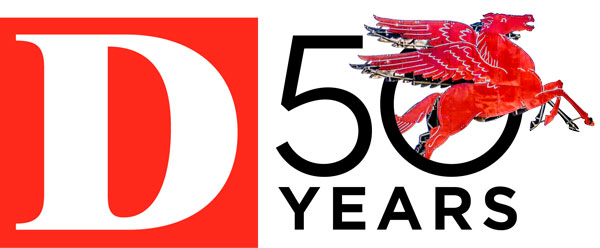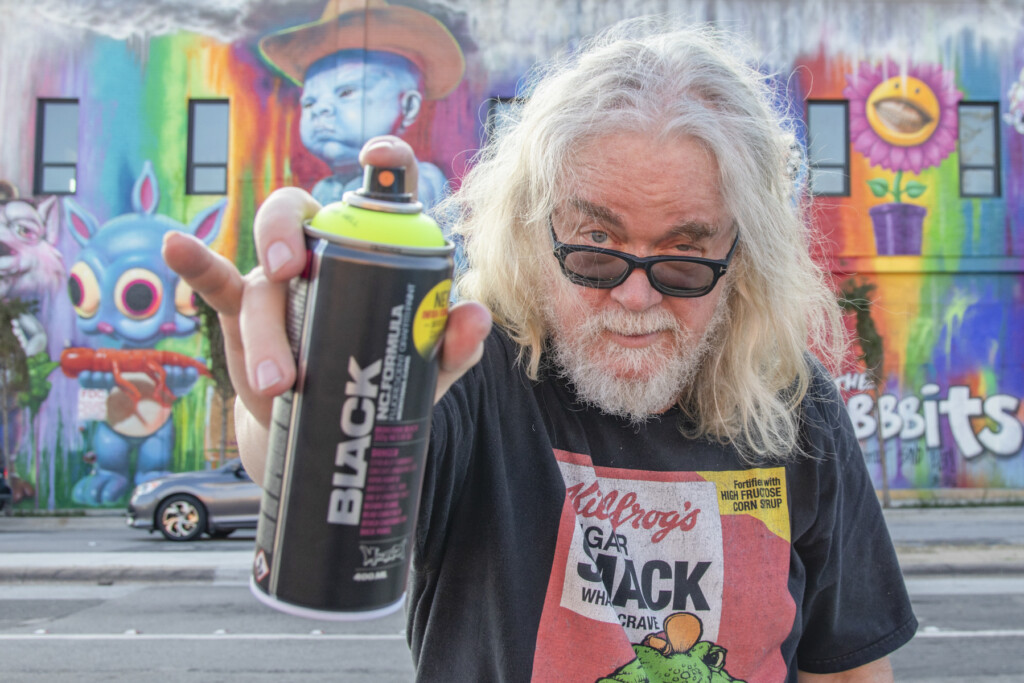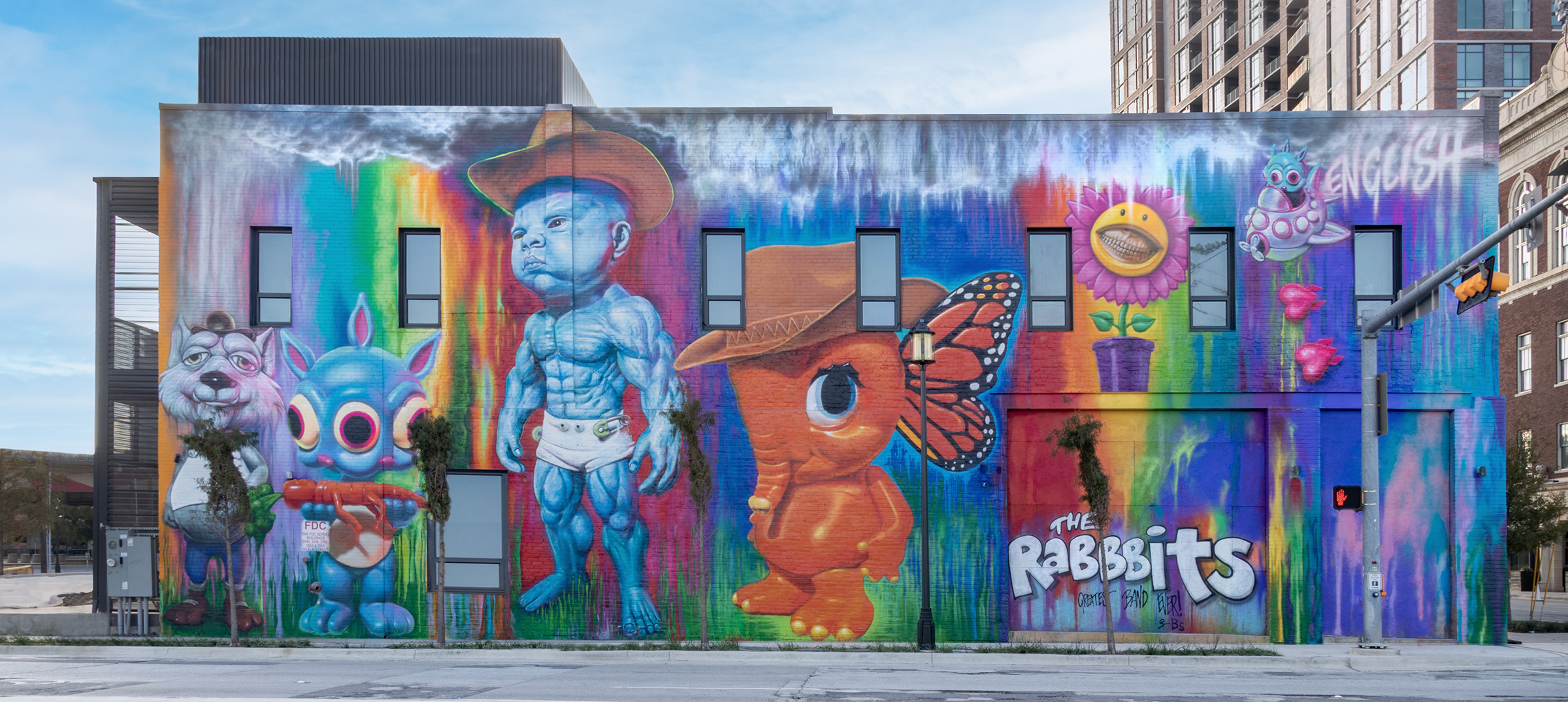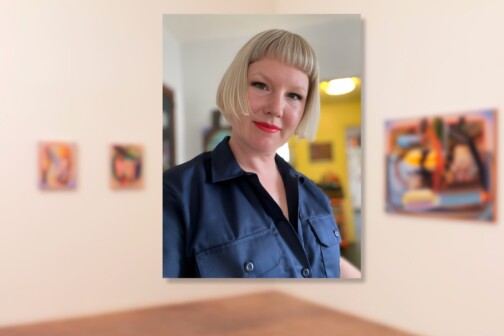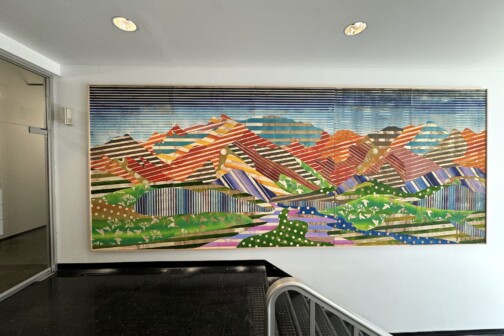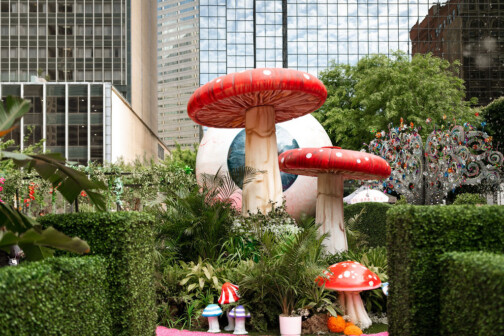You can argue that street art as we know it today began in Deep Ellum. And the best person to make that argument is Ron English, whose new mural was unveiled last week on a building at Good Latimer and Elm streets.
Before he became a peer to Banksy, a mentor to Kaws, and a world famous artist in his own right, English was hanging out at the Theatre Gallery on Commerce Street, checking out concerts at the Gypsy Tea Room, and painting murals at The Prophet Bar. That was in the early 1980s. All of those places have closed, some of them decades ago.
But English still sees his latest contribution to the neighborhood as a homecoming of sorts. Last week, he finished the 1,728-square foot mural called “Texas Tantrum Tots and Pals.” It’s a collection of some of his most recognizable characters, who now stand guard over a block that would be unrecognizable to a time traveler from 40 years ago.
“Working on the mural has been kind of like a class reunion,” English says, on a rainy Friday a few hours before a wrap party at All Good Cafe. “I ran into a lot of people from the old days, back when we were throwing pop-up shows in warehouses and making street art.”
English received formal training as a painter at the University of North Texas and then at University of Texas, where he earned his master’s. But his early career was guided by rebellion. He became most well known for “culture jamming,” the practice of re-contextualizing well known brands or iconography, and sometimes entire billboards, to create an anti-corporate message. English coined the phrase “Popaganda” to describe his use of a pop art sensibility to subvert the pervasive messages in culture. He famously inflated Ronald McDonald into MC Supersize—he’s in the documentary Supersize Me—and turned the mascots of popular cereals into Cap’n Cornstarch and Fat Tony.
English was always ahead of his time. He’s been donned the “godfather of street art” because he was one of the first—if not the first—artists to commercialize graffiti. He created entire worlds of characters, complete with scenery, backstories, and even music that’s available on Spotify by the band The Rabbbits. (Make sure to note the three b’s.) He turned his characters into collectible toys before that was a widespread method of art distribution. And he created immersive art installations that are touring Europe and China. “Delusionville,” which he describes as “Animal Farm” on acid, opens in Miami this December.
“A lot of the ways that people disseminate art now, we were doing it in Dallas in the 70s,” English says. “The one-time outlaws are now in-laws.”
English established himself in New York City, because he felt it was a necessary move in order to have a global art career. He’s been straddling the worlds of street art and fine art ever since. He’s created several murals in the Wynwood district of Miami; he exhibits in galleries across the world; magazines debate whether he or Banksy has the “hardest style.”
The mural in Dallas stars characters that date back to his earliest drawings. Earl Grey, the wolf on the southern side of the mural, who he says “has a lot of swagger,” was based on the winos that he used to meet in the streets of Deep Ellum. All the characters in the mural are part of larger storylines he’s created. Of course, all have accompanying music courtesy The Rabbbits.
“This is just the tip of the iceberg,” English says. “These are characters that exist as part of a larger universe. They’re inviting you in.”
See the mural at 2556 Elm St. in Deep Ellum.
Get the FrontRow Newsletter
Author

